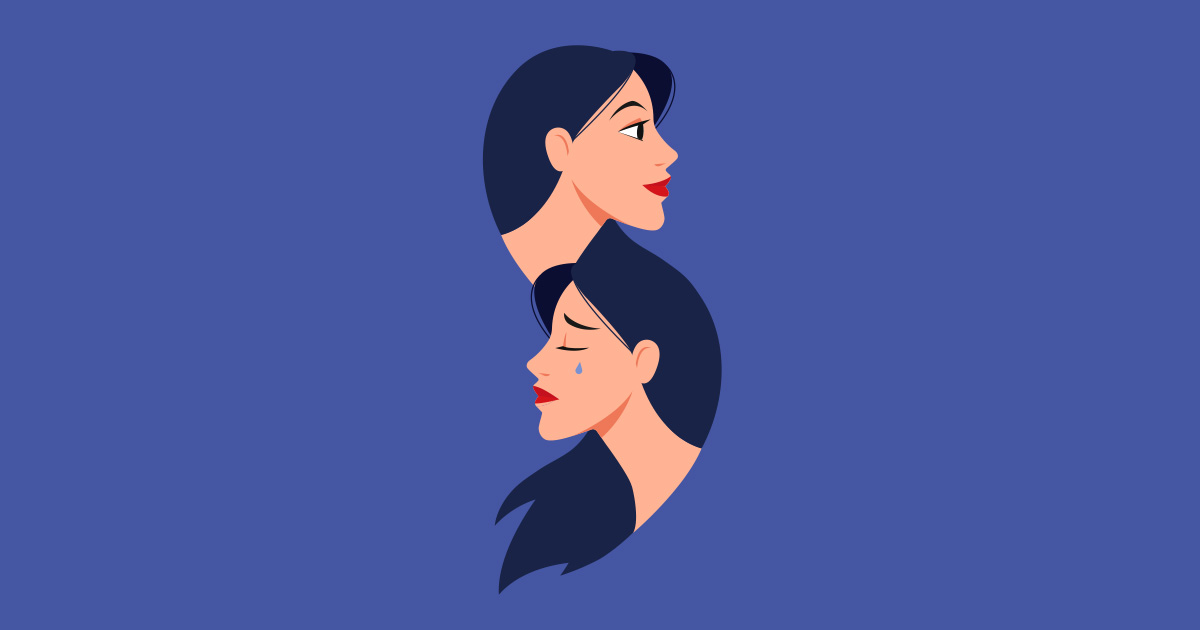Bipolar disorder, previously known as manic depression, is a mental health condition that affects a person’s mood, behavior, energy, and ability to function. People with bipolar disorder experience extreme changes in mood and behavior, which can be distressing and disruptive to their daily life. It can impact a person’s daily life, relationships, and ability to perform daily activities.
It is estimated that about 4.4 percent of adults in the US will develop bipolar disorder at some point in their life. And despite being significantly less prevalent than most other mental health disorders, bipolar disorder remains one of the most debilitating mental illnesses – especially if left untreated.
What Causes Bipolar Disorder?
The exact cause of bipolar disorder is not well understood. It is believed to be associated with abnormalities in brain chemistry and functioning. Genetics may also play a role, as it often tends to run in families. Stressful or traumatic life experiences and excessive alcohol/substance abuse can trigger the onset of symptoms or make them worse.
Types of Bipolar Disorder
There are four common types of bipolar disorder, namely bipolar I disorder, bipolar II disorder, cyclothymic disorder, and other specified and unspecified bipolar disorders.
Bipolar I Disorder: Bipolar I disorder is the most severe form of bipolar disorder, characterized by manic episodes that go on for at least seven days or are severe enough to warrant hospitalization. Depressive episodes are also present in people with bipolar I disorder but are not necessary for diagnosis.
Bipolar II Disorder: Bipolar II disorder is relatively less severe than bipolar I disorder but still involves drastic and debilitating mood swings. It manifests through episodes of depression and hypomania (a less severe form of mania). To be diagnosed with this type of bipolar disorder, one must have experienced at least one episode of hypomania and one episode of depression.
Cyclothymic Disorder: This type of bipolar disorder is characterized by frequent, alternating periods of depression and hypomania that last for at least two years. It is typically less severe than other types of bipolar disorder.
Other Specified and Unspecified Bipolar Disorders: This category includes more atypical forms of bipolar disorder that do not fit the criteria for any of the above categories, such as rapid-cycling and mixed features bipolar disorder.
What Are the Symptoms of Bipolar Disorder?
Generally, symptoms of bipolar disorder vary from person to person and can range from mild to severe or debilitating. They are categorized into two – manic symptoms and depressive symptoms:
Symptoms of Mania
Mania is a state of elevated or irritable mood, increased energy, and decreased need for sleep. People with bipolar disorder can experience symptoms of mania, which can last for days to weeks. The following are the most common symptoms of mania:
- Increased energy and activity level
- Elevated or irritable mood
- Decreased need for sleep
- Grandiose thinking or an exaggerated sense of self-importance
- Racing thoughts
- Engaging in impulsive, risky, and self-destructive behavior
- Increased talkativeness or rapid speech
- Getting distracted easily
- Poor decision making
Symptoms of Depression
Depression is a state of low mood and loss of interest in activities that were once enjoyable. People with bipolar disorder can experience symptoms of depression, which can last for weeks to months. The following are the most common symptoms of depression:
- Low mood or sadness
- Loss of interest in activities once enjoyed
- Changes in appetite and sleep patterns
- Feeling hopeless and helpless
- Fatigue and low energy
- Irritability or anger
- Social isolation
- Difficulty experiencing positive emotions
- Feelings of guilt and worthlessness
- Problems concentrating
- Thoughts of self-harm or suicidal ideation
Treating Bipolar Disorder
There is no cure for bipolar disorder, but with proper treatment and self-care, it is possible to keep the symptoms under control and live a fulfilling life.
The most common treatments for bipolar disorder include medication, psychotherapy, lifestyle changes, and self-care strategies. It’s vital to work with a mental health professional that can help tailor your treatment plan to meet your specific needs.
Some people with bipolar disorder may also benefit from non-conventional treatments such as ketamine infusion therapy, transcranial magnetic stimulation (TMS), and holistic approaches like acupuncture, yoga, and meditation.
The Takeaway
Bipolar disorder is a debilitating mental health condition that affects mood and behavior by causing extreme and disruptive shifts in mood, energy, behavior, and activity levels. The symptoms of bipolar disorder can vary from one person to the next, depending on the severity and type of bipolar disorder they have.
It is important to remember that bipolar disorder is a treatable condition. With the right treatment plan, lifestyle changes, and self-care strategies, it’s possible to live a symptom-free life.






